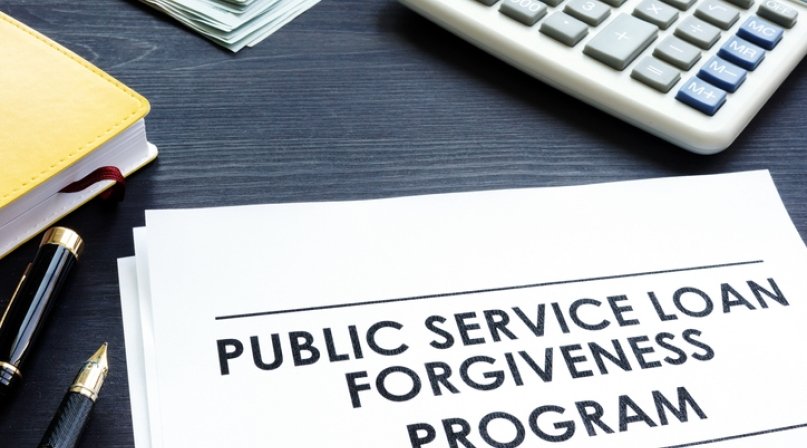The PSLF program future—a lifeline for millions of public service workers—recently faced a quiet but impactful battle. While many hoped for clarity, the issue fizzled out with no firm decisions, leaving student loan borrowers once again in the dark.
Though the debate happened behind closed doors and out of the media spotlight, its consequences could shape the lives of teachers, nurses, first responders, and government employees for years to come. This article unpacks what happened, what’s at stake, and why it matters.
What Is the PSLF Program?
The Public Service Loan Forgiveness (PSLF) program was created in 2007 to help people working in public service jobs manage their student loan debt. The promise was simple: work in a qualifying job for 10 years, make 120 on-time payments, and the remaining balance on your federal student loans would be forgiven.
Sounds great, right? In theory, yes. But in practice, the PSLF program has been plagued by confusion, mismanagement, and administrative hurdles.
Some key issues include:
- Poor communication between servicers and borrowers
- Complicated eligibility requirements
- High rates of rejection due to technicalities
While recent reforms have helped simplify parts of the process, the PSLF program future is far from secure.
The Quiet Battle: What Really Happened?
Behind the scenes in early 2025, discussions about the future of the PSLF program gained momentum. The topic was quietly debated in federal budget meetings, policy workshops, and advisory panels. There were no dramatic announcements, no headlines, and no viral tweets. Just hushed conversations with potentially massive implications.
Who Was Involved?
- U.S. Department of Education: Tasked with managing and improving the PSLF system
- Congressional Lawmakers: Some advocated for expansion, others called for major reform or even elimination
- Loan Servicing Companies: Entities like MOHELA, which have a say in how PSLF is implemented
- Public Service Worker Unions: Strong advocates for maintaining or expanding PSLF
- Think Tanks and Policy Analysts: Quietly publishing reports and lobbying lawmakers
Despite months of talks, the conflict ended without resolution. No new rules. No firm direction. Just silence.
Why This Battle Matters
The fact that this issue wasn’t resolved is troubling. For many borrowers, especially younger professionals who planned their careers around PSLF program benefits, the lack of direction creates serious uncertainty.
1. Borrower Confidence Is Shaken
Imagine working in a low-paying public service job, turning down higher-paying private sector offers, all because you believed your loans would be forgiven after 10 years. Now, you’re not even sure the program will survive.
2. Recruitment and Retention Are at Risk
Hospitals, schools, and government agencies rely on the PSLF to attract and keep workers. Without clear support for the program, public service sectors may struggle to fill key roles.
3. Political Messaging Is Mixed
One administration supports expanding forgiveness; another wants to cut costs and shrink government debt. Borrowers are caught in the middle, unsure of whom to trust.
A Timeline of the PSLF Struggles
To understand how we got here, it helps to look back at the PSLF journey:
2007 – PSLF is created under President George W. Bush
2017 – First group of borrowers becomes eligible, but 98 percent are denied
2021 – Temporary waivers expand eligibility and improve forgiveness rates
2022 – Biden administration announces permanent reforms
2023 – MOHELA takes over servicing, causing delays and communication issues
2024 – Lawsuits and audits reveal administrative problems
2025 – Silent policy battle ends with no major decisions
Borrowers’ Voices: Real People, Real Impact
Here are a few quotes from borrowers navigating the uncertain PSLF program future:
“I became a social worker because I believed in the mission—and the PSLF. Now I’m scared the rug will be pulled out from under me.”
– Sara, 32, Illinois
“I’ve made 94 payments. I’m so close. But what if they change the rules again?”
– Daniel, 41, California
“Without PSLF, I’d never have chosen teaching. It’s hard to imagine sticking it out for another decade without that promise.”
– Meena, 29, New York
These stories show the very human impact of indecision.
What’s Next for the PSLF Program?

Though the battle ended quietly, it’s not over. Advocates are still pushing for:
1. Permanent Simplification
- Auto-enrollment for eligible borrowers
- Better syncing of employment verification
- Real-time progress tracking
2. Expanded Eligibility
- Inclusion of more job types and contract workers
- Recognition of part-time public service work
3. Protection from Political Shifts
- Legislative guarantees to safeguard the program regardless of future administrations
Meanwhile, opponents argue that:
- PSLF is too expensive for taxpayers
- It unfairly benefits people with graduate degrees
- Forgiveness should be need-based, not job-based
Until Congress acts, or the Department of Education makes another move, the PSLF program future remains in limbo.
What Should Borrowers Do Now?
If you’re a public service worker or planning to become one, here are some practical steps:
Confirm Your Eligibility
Check if your job qualifies and that your loans are federal Direct Loans.
Submit the PSLF Form Annually
This helps track your qualifying payments and employment.
Use the PSLF Help Tool
The Department of Education offers an online tool to guide you.
Stay Informed
Follow updates from StudentAid.gov, PSLF forums, and official DOE announcements.
Document Everything
Keep copies of employment certifications, payment histories, and communication with your servicer.
Final Thoughts: Why Silence Is Dangerous
While political noise often drowns out meaningful policy debates, the PSLF program future slipped through the cracks without a decision. That silence is itself a decision—one that leaves millions of borrowers anxious and uncertain.
For a program built on a 10-year promise, lack of clarity is more than frustrating. It’s destabilizing. Policymakers must recognize that trust is not just about making good decisions—it’s also about making them on time.
Until then, public servants will keep doing their jobs, making payments, and hoping that the promise of PSLF doesn’t quietly disappear the way this battle just did.
Read Next – Penn’s $175M Trump Deal: Lia Thomas Title IX Controversy





